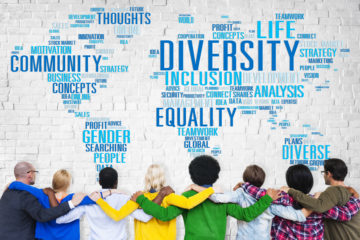The misguided attempt to keep it simple
Millennials and Baby Boomers are both victims of being boxed and labelled. They sit in their box and share the same characteristics with millions of others who have been put into the same box, simply by defining an age range. Everyone seems to be so eager to do research and explain how the Millennials and Baby Boomers think and act, what drives them, and how to best ‘handle’ them in the work place. Furthermore, this is supposedly serving the purpose of understanding each other better and increase our capability to engage with diverse people in an inclusive way.
Let’s think about this a bit!
Are we saying that millions of people share the same characteristics and even personality traits simply based on their age? A quick Google search resulted in the following characteristics:
Millennials are family-oriented, tech-savvy, not afraid to question authority, confident and ambitious, seek attention, feedback, recognition, focus on work-life balance.
Baby Boomers have a strong work ethic, they are independent and self-assured, like competition, goal-centric, resourceful, mentally focused, team oriented and disciplined.
If you belong to either group based on your age, do you have the characteristics of your group and not those of the other group? Do you know a Baby Boomer who has characteristics of a Millennial and vice versa?
Apart from our age group, what do we really share with those millions of people around the world? The answer is very little. Diversity within a group increases with the group size, therefore a large group cannot have much in common. You may say one cohort grew up in a digital environment, the other cohort didn’t. Still, both lived through the technical developments at the same time which is when they happened. Depended on their interests and socio-economic environment individuals in both groups had varying degrees of exposure to digital technology. We cannot assume that based on their age one individual is more tech savvy than the other.
What have Millennials and Baby Boomers in common then?
Like any other individual they both want to be accepted, acknowledged and appreciated for who they are and for the unique contributions they make. This is a universal human need and it is the true foundation for inclusion. Inclusion is about the individual, not the groups they belong to. Trying to understand people as being part of groups with certain characteristics is the opposite of inclusion. Individuals won’t feel accepted, acknowledged and appreciated. We belong to many groups and still are unique.
The reason why are we so desperate to put people in boxes with labels is a psychological one. Thinking about groups of people simplifies our lives and gives us guidance on how to interact with them without the need to use much of our cognitive brain. We can make quicker decisions but are those better decisions? The definition of a stereotype is “…a widely held but fixed and oversimplified image or idea of a person or thing.”
Labeling age groups is a form of stereotyping
Assigning certain characteristics to age groups is a form of stereotyping. We need to remember how those stereotypes have been developed, supported and maintained. In the search for statistically significant differences, a large group of people usually gets to answer questions or rank their priorities or preferences. From here it’s a numbers game. For example, how high is work-life balance ranking in each age group? Research of variable qualities is getting published which is eventually picked up by mainstream media but not before it was further simplified for the masses. The messages are finding an audience because people crave for answers which simplify the complexity of their interactions with other human beings. Stereotypes emerge and are consolidated every time they are talked about. By the time we are prone to stereotyping Baby Boomers, our confirmation bias is acting like a filter. We register information that confirms our existing beliefs and filter out any other information that does not fit. Our brain is highly effective in this filtering process with the result of solidifying the Baby Boomer stereotype.
Let’s not forget, the formation of stereotypes started with comparing numbers, specifically average ratings between age groups. How does this help when we are interacting with an actual person who may or may not be like their stereotype?
Help to unite our generations
Stereotypes can be a first guide, but they need to be checked. In our interactions, we should switch from our subconscious, automated brain to our conscious, processing brain. We need to keep an open mind and gather information in an objective and unbiased way. We also need to be prepared to dismiss the stereotype altogether.
I encourage everyone to get to know the individual rather than the groups they belong to. You will increase your chance to make them feel accepted, acknowledged and appreciated for who they really are and the unique contributions they make. Trying to understand people as being part of groups with certain characteristics is not doing the individual justice.
Get in contact with us today to find out how we can help you.
Please leave me your comments, contrary views, and any related experiences you may want to share.

